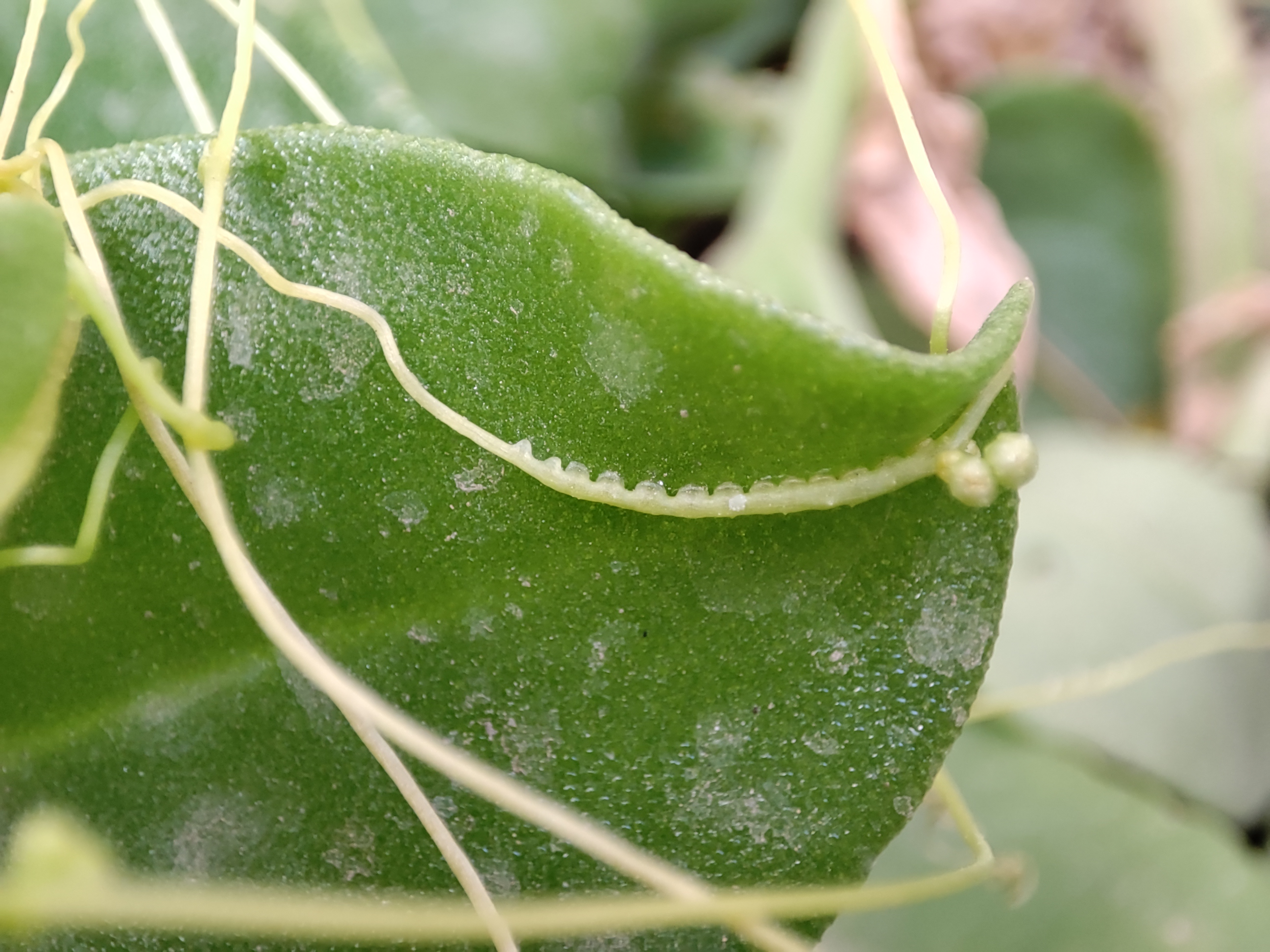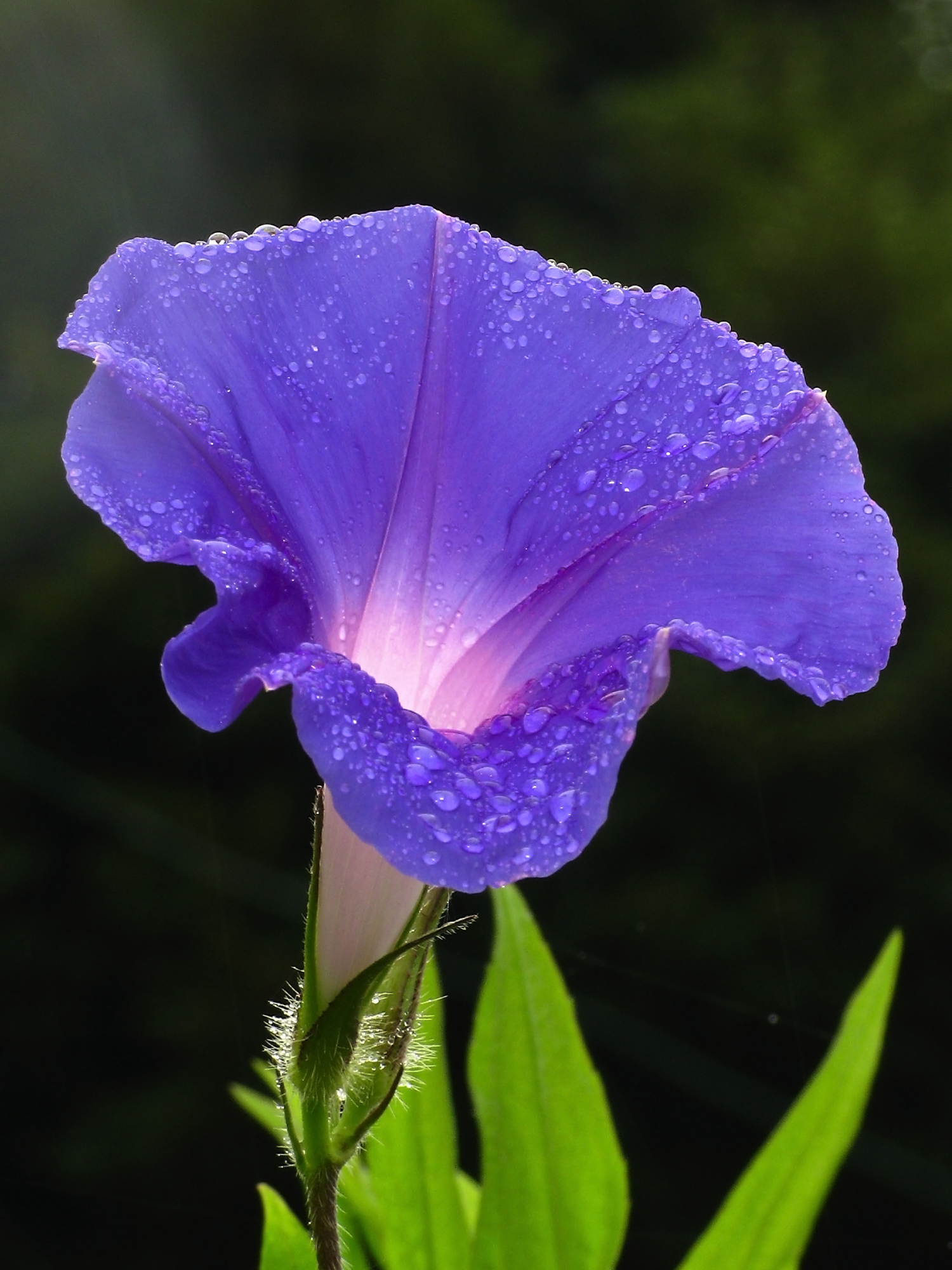|
Convolvulaceae
Convolvulaceae (), commonly called the bindweed, bindweeds or morning glory, morning glories, is a Family (biology), family of about 60 genera and more than 1,650 species. These species are primarily herbaceous vines, but also include trees, shrubs and herbs. The Tuber, tubers of several species are edible, the best known of which is the sweet potato. Description Convolvulaceae can be recognized by their funnel-shaped, radially symmetrical corolla (flower), corolla; the floral formula for the family has five sepals, five fused petals, five epipetalous stamens (stamens fused to the petals), and a two-part syncarpous and superior gynoecium. The stems of these plants are usually winding, hence their Latin name (from ''convolvere'', "to wind"). The leaves are simple and alternate, without stipules. In parasitic Cuscuta (dodder) they are reduced to scales. The fruit can be a capsule, berry, or nut, all containing only two seeds per one locule (one ovule/ovary (botany), ovary). ... [...More Info...] [...Related Items...] OR: [Wikipedia] [Google] [Baidu] |
Cuscuta
''Cuscuta'' (), commonly known as dodder or amarbel, is a genus of over 201 species of yellow, orange, or red (rarely green) parasitic plants. Formerly treated as the only genus in the family Cuscutaceae, it now is accepted as belonging in the morning glory family, Convolvulaceae, on the basis of the work of the Angiosperm Phylogeny Group. The genus is found throughout the middle latitudes, temperate and tropics, tropical regions of the world, with the greatest species diversity in subtropics, subtropical and tropical regions; the genus becomes rare in cool temperate climates, with only four species native to northern Europe. Folk names include strangle tare, strangleweed, scaldweed, beggarweed, lady's laces, fireweed, wizard's net, devil's guts, devil's hair, devil's ringlet, goldthread, hailweed, hairweed, hellbine, love vine, pull-down, angel hair, and witch's hair. Description ''Cuscuta'' can be identified by its thin stems appearing leafless, with the leaf, leaves reduced ... [...More Info...] [...Related Items...] OR: [Wikipedia] [Google] [Baidu] |
Morning Glory
Morning glory (also written as morning-glory) is the common name for over 1,000 species of flowering plants in the family Convolvulaceae, whose taxonomy and systematics remain in flux. These species are distributed across numerous genus, genera, including: * ''Argyreia'' * ''Astripomoea'' * ''Calystegia'' * ''Convolvulus'' * ''Ipomoea'' (the largest genus) * ''Lepistemon'' * ''Merremia'' * ''Operculina'' * ''Rivea'' * ''Stictocardia'' ''Ipomoea tricolor'', commonly known simply as "morning glory", is the archetypical species for the group and is renowned for its many beautiful varieties, such as 'Heavenly Blue', 'Flying Saucers', and 'Pearly Gates'. As the name suggests, most morning glory flowers open early in the day and begin to fade by late morning, as the Corolla (botany), corolla starts to curl inward. They thrive in full sun and prefer mesic habitat, mesic soils. While many species are known for their diurnal blooming pattern, some, such as ''Ipomoea muricata'', ''Ipo ... [...More Info...] [...Related Items...] OR: [Wikipedia] [Google] [Baidu] |
Convolvulus
''Convolvulus'' is a genus of about 200 to 250''Convolvulus''. Flora of China.''Convolvulus'' The Jepson eFlora. 2013. species of s in the family ,Parnell, J. and Curtis, T. 2012. ''Webb's An Irish Flora''. Cork University Press. with a |
Jacquemontia Paniculata W IMG 2929
''Jacquemontia'' is a genus of plants in the morning glory family Convolvulaceae Convolvulaceae (), commonly called the bindweed, bindweeds or morning glory, morning glories, is a Family (biology), family of about 60 genera and more than 1,650 species. These species are primarily herbaceous vines, but also include trees, sh .... Species in this genus are commonly known as clustervine. Species Over one hundred species are recognised: * '' Jacquemontia abutiloides'' * '' Jacquemontia acrocephala'' * '' Jacquemontia acuminata'' * '' Jacquemontia aequisepala'' * '' Jacquemontia albida'' * '' Jacquemontia anomala'' * '' Jacquemontia asarifolia'' * '' Jacquemontia bahiensis'' * '' Jacquemontia blanchetii'' * '' Jacquemontia bracteosa'' * '' Jacquemontia browniana'' * '' Jacquemontia capitellata'' * '' Jacquemontia cataractae'' * '' Jacquemontia caudata'' * '' Jacquemontia cayensis'' * '' Jacquemontia cearensis'' * '' Jacquemontia cephalantha'' ... [...More Info...] [...Related Items...] OR: [Wikipedia] [Google] [Baidu] |
Sweet Potato
The sweet potato or sweetpotato (''Ipomoea batatas'') is a dicotyledonous plant in the morning glory family, Convolvulaceae. Its sizeable, starchy, sweet-tasting tuberous roots are used as a root vegetable, which is a staple food in parts of the world. Cultivars of the sweet potato have been bred to bear tubers with flesh and skin of various colors. Moreover, the young shoots and leaves are occasionally eaten as greens. The sweet potato and the potato are in the order Solanales, making them distant relatives. Although darker sweet potatoes are often known as "yams" in parts of North America, they are even more distant from actual yams, which are monocots in the order Dioscoreales. The sweet potato is native to the tropical regions of South America in what is present-day Ecuador. Of the approximately 50 genera and more than 1,000 species of Convolvulaceae, ''I. batatas'' is the only crop plant of major importance—some others are used locally (e.g., ''I. aquatica'' "ka ... [...More Info...] [...Related Items...] OR: [Wikipedia] [Google] [Baidu] |
Ipomoea Imperati
''Ipomoea imperati'', the beach morning-glory (a name it shares with ''Ipomoea pes-caprae''), is a species of flowering plant in the family Convolvulaceae. Like ''Ipomoea pes-caprae'', its seeds Drift seed, disperse by floating in seawater. It has been found on the sandy shores of every continent except Antarctica. ''Ipomoea imperati'' and ''I. pes-caprae'' can be easily can be distinguished in that ''I. imperati'' has white flowers and ''I. pes-caprae'' usually has purple flowers. The leaves of ''I. imperati'' are more linear or lanceolate while those of ''I. pes-caprae'' tend to be more circular or ovate. It is considered an invasive species in some places. References Ipomoea, imperati Plants described in 1866 {{Solanales-stub ... [...More Info...] [...Related Items...] OR: [Wikipedia] [Google] [Baidu] |
Vine
A vine is any plant with a growth habit of trailing or scandent (that is, climbing) stems, lianas, or runners. The word ''vine'' can also refer to such stems or runners themselves, for instance, when used in wicker work.Jackson; Benjamin; Daydon (1928). ''A Glossary of Botanic Terms with their Derivation and Accent'', 4th ed. London: Gerald Duckworth & Co. In parts of the world, including the British Isles, the term "vine" usually applies exclusively to grapevines, while the term "climber" is used for all climbing plants. Growth forms Certain plants always grow as vines, while a few grow as vines only part of the time. For instance, poison ivy and bittersweet can grow as low shrubs when support is not available, but will become vines when support is available. A vine displays a growth form based on very long stems. This has two purposes. A vine may use rock exposures, other plants, or other supports for growth rather than investing energy in a lot of supportive tissu ... [...More Info...] [...Related Items...] OR: [Wikipedia] [Google] [Baidu] |
Ipomoea Aquatica
''Ipomoea aquatica'', commonly known as water spinach or kangkung, is a semi- aquatic, tropical plant grown as a vegetable for its tender shoots. ''I. aquatica'' is generally believed to have been first domesticated in Southeast Asia. It is widely cultivated in Southeast Asia, East Asia, and South Asia. It grows abundantly near waterways and requires little to no care. Description ''Ipomoea aquatica'' grows in water or on moist soil. Its stems are or longer, rooting at the nodes. The hollow cavity within the stem makes the plant buoyant. The leaves vary from typically sagittate (arrowhead-shaped) to lanceolate, long and broad. The flowers are trumpet-shaped, in diameter, and usually white in colour with a mauve centre. Propagation is either by planting cuttings of the stem shoots, which will root along nodes, or by planting the seeds from flowers that produce seed pods. Names ''Ipomoea aquatica'' is most widely known as kangkong (also spelled ''kangkung''), its common name ... [...More Info...] [...Related Items...] OR: [Wikipedia] [Google] [Baidu] |
Bindweed
Bindweed may refer to: * Some species of Convolvulaceae (bindweed family or morning glory family): ** ''Calystegia'' (bindweed, false bindweed, morning glory), a genus of about 25 species of flowering plants ** ''Convolvulus'' (bindweed, morning glory), a genus of about 250 species of flowering plants ** ''Polymeria calycina'', slender bindweed, native to Australia * ''Dioscorea communis'', black bindweed * ''Fallopia convolvulus'', black bindweed, a fast-growing annual flowering plant * ''Solanum dulcamara'', blue bindweed {{Plant common name ... [...More Info...] [...Related Items...] OR: [Wikipedia] [Google] [Baidu] |
Herbaceous
Herbaceous plants are vascular plants that have no persistent woody stems above ground. This broad category of plants includes many perennials, and nearly all annuals and biennials. Definitions of "herb" and "herbaceous" The fourth edition of the '' Shorter Oxford English Dictionary'' defines "herb" as: # "A plant whose stem does not become woody and persistent (as in a tree or shrub) but remains soft and succulent, and dies (completely or down to the root) after flowering"; # "A (freq. aromatic) plant used for flavouring or scent, in medicine, etc.". (See: Herb) The same dictionary defines "herbaceous" as: # "Of the nature of a herb; esp. not forming a woody stem but dying down to the root each year"; # "BOTANY Resembling a leaf in colour or texture. Opp. scarious". Botanical sources differ from each other on the definition of "herb". For instance, the Hunt Institute for Botanical Documentation includes the condition "when persisting over more than one growing season, the ... [...More Info...] [...Related Items...] OR: [Wikipedia] [Google] [Baidu] |
Gynoecium
Gynoecium (; ; : gynoecia) is most commonly used as a collective term for the parts of a flower that produce ovules and ultimately develop into the fruit and seeds. The gynoecium is the innermost whorl (botany), whorl of a flower; it consists of (one or more) ''#Pistil, pistils'' and is typically surrounded by the pollen-producing plant reproductive morphology, reproductive organs, the stamens, collectively called the androecium. The gynoecium is often referred to as the "female" portion of the flower, although rather than directly producing female gametes (i.e. egg cells), the gynoecium produces megaspores, each of which develops into a female gametophyte which then produces egg cells. The term gynoecium is also used by botanists to refer to a cluster of archegonia and any associated modified leaves or stems present on a gametophyte shoot in mosses, Marchantiophyta, liverworts, and hornworts. The corresponding terms for the male parts of those plants are clusters of antheridiu ... [...More Info...] [...Related Items...] OR: [Wikipedia] [Google] [Baidu] |








